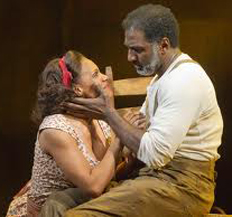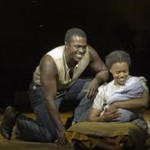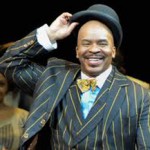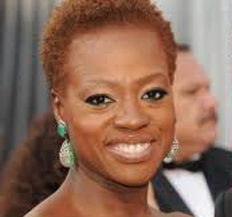 How sweet is the taste of a movie with a female heroine heralded as the top-grossing non-sequel film debut weekend of all time? And how sweet is it that The Hunger Games, the adaptation of the first novel in Suzanne Collins’s trilogy about Panem, a dystopian country that sacrifices its children for the amusement of its privileged leisure class, is a faithful, stirring, smart film that doesn’t pander to either sentimentality or sensationalism in translating Collins’s politically nuanced story to the screen?
How sweet is the taste of a movie with a female heroine heralded as the top-grossing non-sequel film debut weekend of all time? And how sweet is it that The Hunger Games, the adaptation of the first novel in Suzanne Collins’s trilogy about Panem, a dystopian country that sacrifices its children for the amusement of its privileged leisure class, is a faithful, stirring, smart film that doesn’t pander to either sentimentality or sensationalism in translating Collins’s politically nuanced story to the screen?
Starring Jennifer Lawrence (Winter’s Bone) as Katniss Everdeen, the trilogy’s heroine, The Hunger Games creates a rich material world for a story imagined so vividly by so many readers. Director Gary Ross and his production designers realize the fictional country’s twelve dispossessed districts and its excessively decadent capitol in a way that convinced me it was just as I’d pictured it as I read the novel, captivated by Collins’s narrative.
Katniss hails from District Twelve, where coal mines provide the Capitol with energy and the district’s residents with straitened lives of near-starvation and strife. Katniss breaks the repressive government’s strict rules by sneaking through the district’s boundary fence to hunt for food with her friend, Gale (a handsome, stalwart Liam Hemsworth). Her father died in a mining accident; his sudden death left her mother catatonic with grief and unable to care for Katniss and her younger sister, Prim.
Ross’s film establishes in deft strokes that Katniss is an accomplished hunter with a keen understanding of the woods in which she and Gale poach. Wearing threadbare clothing and scuffed boots, she strides through the hills and trees (Ross filmed around Asheville, North Carolina) and confidently wields a bow and arrow to bag birds and the rare deer. She and Gale have an easy camaraderie that comes less from romantic attraction than from similar survival instincts, the confidence of being good at what they do, and the imperative that they provide for their families.
In other words, The Hunger Games breaks stereotypes almost immediately by representing a friendship between a young man and woman that’s not based on facile heterosexual romantic rituals. The stakes for Katniss and Gale are much higher—they could be killed for leaving the district borders, but they risk their lives to put food on their tables.
Their lasting bond is broken by the annual “reaping,” when two children between 12 and 18 from each of Panem’s districts are chosen at random as “tributes” to compete in the televised gladiatorial competition known as “the hunger games.” In District Twelve, the children assemble in the town square wearing their best clothes, shirts and pants and dresses of worn, graying cotton, while the Capitol’s bubble-headed representative, Effie Trinket (Elizabeth Banks), parades before them in garish shades of pink and red. Her excessively colorful outfit, make-up, and wig set her off as outlandish in the district’s drab landscape.
To begin the reaping, Effie plays the videoed reminder that the Games were established to assert the Capitol’s political primacy, after the districts tried unsuccessfully to rebel against its hegemony. Before she picks the names of the unlucky tributes, Effie unctuously pronounces her benediction: “May the odds be ever in your favor.”
When Prim is selected as the female tribute, Katniss desperately volunteers to take her younger sister’s place, and is promptly caught up in the horrifying preparations that propel the tributes into the fabricated arena where the games take place. Along with the male tribute, Peeta (Josh Hutcherson, The Kids are All Right), Katniss travels by train toward the glittery, surreal capitol.
En route, the two District Twelve competitors are groomed for the games by Haymitch Abernathy (Woody Harrelson), District Twelve’s only previous winner. His drunken apathy is downplayed in the film adaptation; as soon as he recognizes Katniss’s gumption and talent, he’s persuaded to be the mentor he takes much longer to become in Collins’s book.
Likewise, Cinna (Lenny Kravitz), the stylist who helps Katniss and Peeta make an impression on the Capitol denizens and the nation’s audience in the televised interviews before the games begin, demonstrates immediate sympathy for his tributes’ plight. He signals his antipathy for the brutality of the whole proceedings even as he helps Katniss establish her infamy as the “girl who was on fire” in the pre-games parade.
In these preliminary scenes, before Ross brings us to the central agon of games in which 24 children and teenagers are meant to murder one another until a single victor remains, the director and his cinematographer show us District Twelve and the Capitol from Katniss’s point of view. The reaping, for instance, rushes by in a blur, capturing moments and faces in fragments that seem almost Expressionistic as they look so resolutely through Katniss’s anxious eyes.
The kinetic editing and point-of-view shots help create an atmosphere taut with tension and fear, and beautifully capture Katniss’s confusion and terror (and intelligence) as she’s escorted by Peacekeepers (who look like soldiers from the Star Wars films) into the custody of her handlers.
By giving us visual insight into Katniss’s emotional vulnerability, Ross humanizes a heroine whose inner dialogue we can no longer hear, as we could reading Collins’s prose. [Spoiler alert.] Katniss’s strength enables her to survive the games, but it could also make her appear unsympathetic and impassive.
In fact, Mahnola Dargis, writing for the Times, found Lawrence’s performance “disengaged” in just this way. But the film itself addresses this quandary; Katniss isn’t cut from gregarious cloth, and refuses to pander to the television viewers even when her life depends on it. Similarly, Lawrence doesn’t play to Ross’s camera; hers is a nuanced and, I think, strong and successful performance of Collins’s signal heroine.
Instead, Ross uses his camera to bring us closer to Katniss’s feelings, while letting her retain the dignity of her strength and her intelligence and, in some ways, her privacy, despite the intrusions of rabid spectators into her life prior to and during the games. For example, in moments of duress in the arena fabricated and controlled by the “Gamemaker,” Seneca Crane (Wes Bentley), the television director who engineers the games much like Ed Harris’s producer character manipulated the world of The Truman Show, we see flashbacks to earlier moments in Katniss’s life that help explain her resolve.
We see her father descending into the mines, and then watch a fiery explosion that implies his death. We see her mother descending into madness. We see Katniss’s prior relationship with Peeta, the baker’s son, who defies his hateful mother by throwing bread meant for their pigs in Katniss’s direction, as she hovers in the rain outside the bakery, hungry and watching.
And when Katniss is stung during the games by horrifying “tracker jackers,” an insect engineered by the Gamemaker with stings so painful they bring on hallucinatory episodes and sometimes death, we see the venom’s effects on Katniss from her perspective. Blurred, tunneled images capture Peeta’s distorted voice shouting at her to run, and the woods rushing by in a swirl of surreal light and color. All of these filmic strategies place us squarely behind Katniss.
Ross and his team tell the story with a dynamic style that moves it inexorably forward, even in scenes that might otherwise be static. The whole thing feels like a chase film, in which Katniss and the other tributes are being followed and watched not just by one another, but by the eyes of the state, which are always focused on them.
For instance, when Katniss first ties herself to a branch high in a tree on her first night in the arena, she hears a mechanical noise, and realizes that what she took for a knot in the tree trunk is actually an embedded camera. As she peers into it curiously, Ross cuts to people watching “at home,” in large crowds outdoors in the districts, or on make-shift screens in their homes.
The Capitol’s technology invades their lives not for the pleasure of information and communication, but to insure its own hegemony. This is technology as tyranny, the flip side, Collins suggests, of the high tech revolution as empowering.
In the book, Katniss’s inner monologue was protected from the ravages of such state surveillance, so the reader was insured a counter-point to the intrusions of President Snow and his minions’ power. The Hunger Games on film, though, is also about watching. The film’s spectators, too, have a kind of power over Katniss and, not insignificantly, over Jennifer Lawrence, the young actor chosen for a role that will rival Bella’s in the Twilight series for fan and media attention.
I read a snarky piece on The Daily Beast that suggested Lawrence was being ungenerous about her fame, self-deprecating and diffident. I didn’t see the David Letterman interview to which the article mostly referred, but it sounded to me like Lawrence has taken a page from Katniss’s playbook, which is partly what makes her so wonderful in the role.
Lawrence is rarely off screen during The Hunger Games. But her emotional presence is carefully modulated. Rather than playing a more conventional girl—although the dystopian Panem begs the question of what a “conventional” girl would look or act like in such a hard-scrabbled existence—Lawrence plays Katniss as tensely coiled and focused physically and mentally on outsmarting the other tributes and, eventually, the Capitol’s manipulators.
In Lawrence’s keen interpretation, Katniss is a reluctant heroine. She won’t pander to the Capitol’s media or its cameras in the ways that Haymitch, her perceptive mentor, suggests might be necessary for her to actually win the games. If spectators empathize with or come to favor a tribute, they send help into the arena, little metal parachutes with containers full of much-needed medicine, food, or supplies.
Katniss is forced to think through the costs of her refusal to perform as a more typical, coy, feminine girl, but her continued unwillingness to capitulate makes her an important role model for what will no doubt be legions of the film’s teenaged girl fans. Ross carefully establishes Katniss’s foils—the girly-girl tributes from the other districts who interview with the games’ television host, Caesar Flickerman (a terrifically campy Stanley Tucci, in a blue wig and practically Elizabethan garb).
Although they prove themselves to be quite tough in the arena, for their interviews most of the other girls wear sexy dresses and assume flirtatious manners. And during the games, they combine forces with the alpha males, playing the Bonnies to their Clydes. These female tributes are also lethal—especially Clove (Isabelle Fuhrman), who throws knives—but they’re represented in relation to their young men.
Katniss can’t even fathom such gender performances or alliances. Her subsistence-level life has taught her only to survive, and has stripped away the niceties of human interaction to a central, necessarily suspicious core. Gale is the only person she trusts, with whom she can briefly let down her guard as they talk, before the reaping, in the woods.
But even there, Ross disallows any hint of romance. Theirs is a relationship built on trust and need and a long-standing regard and love. Only when Katniss leaves for the games, and her relationship with Peeta is broadcast around Panem, does Gale realize he’s jealous. His own embarrassment and confusion makes him sweet and rather feminine himself.
Peeta, on the other hand, quickly understands that playing to the crowd might curry important favor. He waves to the Capitol fans who watch their bullet train enter the city, crafting a charismatic smile to wear for them. (Hutcherson’s appealing, low-key magnetism is perfect for the self-deprecating Peeta.)
He insists on taking Katniss’s hand and raising it in a show of victory as their chariot rolls through the gigantic presentation hall at their pre-games debut. As their clothing flames behind them, he tells Katniss the fans will love their daring, and he’s right. Katniss suspiciously jerks her hand from his, but he persuades her otherwise.
When, during his own interview with Flickerman, Peeta declares his love for Katniss, it’s not immediately clear if he’s playing to the cameras again or if he means it. The rest of the film hangs on this ambiguity.
But if Peeta is wily about winning through an appeal to spectators, Katniss’s survival skills keep her firmly enmeshed in the immediacy of the arena’s challenge. How wonderful to watch this girl-hero read the woods, feeling the soil for moisture, crushing leaves in her hand and releasing them to see how the wind blows, using her bow and arrow to bag food and, in the end, to protect herself and Peeta from the remaining tributes.
How lovely to see Peeta hang back behind her as they move through the forest, Katniss with an arrow cocked in her bow for their mutual protection. How amusing the hear Peeta joke that he’ll take the bow to hunt, and to watch Katniss’s incredulous reaction. How nice to see the girl save the boy, helping him into a sheltered cave when he’s hurt, risking everything to get medicine for him, and masterminding the actions that in the end will save them both.
Lawrence plays these actions with an understated performance that’s alive with nuance. Her face registers everything, but in subtly expressive ways—with the twitch of an eye, a small compression of her lips, a hard-won smile, a flicker of confusion. Her pre-games interview with Caesar Flickerman is a marvel of acting as reaction. Katniss is startled and confused by the audience’s uproarious response to her answers to his questions, but she doesn’t have the vaguest idea how to play to their affections, as she’s been tutored.
Lawrence works for every smile Katniss musters. Wearing her red, off-the-shoulder gown, offering to model its fiery train for Flickerman, wearing make-up that’s alien on her face and a hairstyle that’s foreign to her, Katniss looks like a girl in the drag of femininity, trying to work it as ridiculously as Sandra Bullock playing Miss Congeniality, but with much less comedy and much higher stakes.
Katniss’s final confrontation with President Snow (Donald Sutherland, oily and reptilian as ever) models a chilly resistance and promises quite a David v. Goliath confrontation as the trilogy builds momentum. Lawrence’s performance is clear and strong; she does Katniss justice by acting with economy and reserve. Katniss’s inscrutability serves her well among her enemies and the film’s spectators; it keeps her mysterious, unpredictable, and interesting.
Much has been made of the story’s violence, especially among young people forced to murder one another by heartless manipulators. Although the film is tense with the sounds and ever-present threat of bloodshed, remarkably little of it is actually seen on screen.
The initial bloodbath at the cornucopia, when the tributes are first delivered to the arena, is cut in rapid sequences in which, once again, the briefly pictured parts—of faces, limbs, actions, objects—come to stand for the whole without directly representing the killing.
Occasionally, one of the more vicious tributes is seen murdering someone, but usually at a remove. Katniss and Peeta are rarely shown directly inflicting violence; their humanity is always evident and operative.
Ross also keeps sentiment at bay, even in the more emotional, moving scenes. Katniss takes young Rue (Amandla Stenberg), a tribute from District Eleven, under her wing, after Rue helps her escape from the “career” tributes who’ve surrounded the tree in whose branches Katniss keeps herself safe. Their relationship mirrors that of Katniss and Prim. Lawrence and Stenberg play their scenes together beautifully, creating a warmth and connection that belies their murderous environment.
That Katniss cares for Rue until her bitter end, and uses the occasion of her tragic death to gesture in solidarity to her comrades in District Eleven, begins the insurgency that grows through the rest of the trilogy. Here, too, Lawrence productively underplays Katniss’s defiance, emphasizing her hesitant heroism.
In addition to its progressive and nuanced take on gender, The Hunger Games also presents a sophisticated view of an entirely multiracial future society. Those with the most state power continue to be white—President Snow (pun intentional, I assume), Seneca Crane, Caesar Flickerman, and the others are all white (and male).
But in the Capitol and in the districts, Ross has careful cast the extras and other characters in a multiracial array. Every crowd shot is full of people of color as well as people who look white, enough so that the racial and ethnic diversity of appearance is notable.
When Katniss’s alliance with Rue provokes a revolt against the Capitol in District Eleven, Ross films their riots in a style reminiscent of footage of 1960s American civil rights demonstrations. The Peacekeepers subdue the protesters with water cannons. People of various races, working together, overturn dumpsters and destroy property.
The scene is shot in a palette of black and white, and the protestors’ anger and determination, along with the Peacekeepers’ might and the general confusion of social rebellion, look very much like images from the 60s.
In addition to its admirable representations of gender and race, heterosexual romance is muted profitably in The Hunger Games. Katniss’s tenderness is reserved for Rue; their sweet, more emotionally expressive moments are lovely and moving. Katniss’s rage and grief when Rue dies is her most overt emotional moment during the games.
She also grows attached to Peeta, but because they’re both aware that they’re playing to the cameras, the authenticity of their romantic involvement is always in doubt.
Although by the film’s end, it’s clear that Gale is jealous of Katniss’s relationship with Peeta, and that the sincere and earnest Peeta very much wants to continue the romance they’ve performed, reducing these relationships to “Team Gale” and “Team Peeta” to parallel the Team Edward/Team Jacob triangle of the Twilight franchise is just silly. The Hunger Games is about much more than a young girl choosing between two very different suitors; it’s about fascism and rebellion, about hope and social critique.
I find myself delighted by the amount of press this film has already generated, most of it positive, for a screenplay co-written (with Billy Ray) by a woman based on her novels, about a young woman whose ethical humanity, physical strength, and emotional intelligence is a terrific model for us all.
Looking forward to the second film (scheduled for Thanksgiving 2013).
The Feminist Spectator


 The HBO-produced adaptation of Mark Halperin and John Heilemann’s
The HBO-produced adaptation of Mark Halperin and John Heilemann’s 







 Cynthia Nixon, playing the lead in the Broadway revival of
Cynthia Nixon, playing the lead in the Broadway revival of 
 What’s a feminist spectator to make of an awards show that honors films that have so little to do with women behind the camera or as central to their stories?
What’s a feminist spectator to make of an awards show that honors films that have so little to do with women behind the camera or as central to their stories?